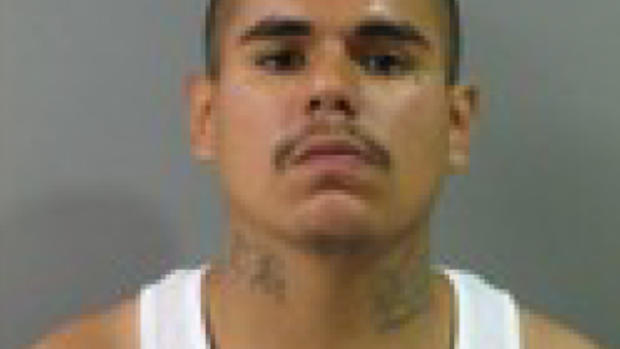How the FBI picks its "Ten Most Wanted" list
A capture this week has brought the FBI's "Ten Most Wanted" list one step closer to a major milestone.
On Wednesday, the FBI announced that Edwin Ernesto Rivera Gracias, who had been wanted in a 2011 murder, had surrendered. Rivera Gracias was added to the "Ten Most Wanted" list just two weeks ago, joining an infamous group that includes serial killer Ted Bundy, Olympic bomber Eric Rudolph, assassin James Earl Ray and Osama bin Laden.
The person who takes Rivera Gracias' spot on the list will be the 499th fugitive to appear; the fugitive who comes next will be the 500th, and the FBI plans to hold a major event to publicize the milestone and celebrate the program.
"There are discussions ongoing about who we would put on as number 500," said Ronald Hosko, Assistant Director of the FBI's Criminal Investigative Division. "We will focus our efforts on trying to pick somebody who really exemplifies the totality of this list, someone who is particularly bad."
It took about three months for the FBI to fill the last opening, which was created when murder suspect Joe Luis Saenz was captured in Mexico last November. The vetting process for adding a new name begins at the FBI's 56 field offices, which send feedback on who might warrant inclusion to the Criminal Investigative Division. Officials use two primary criteria for deciding which fugitives to put on the list: First, the threat they pose to society at large, and second, the likelihood that publicizing their crimes through the list will help to catch them. After the Criminal Investigative Division and FBI public affairs office settle on a candidate, the name goes to FBI director Robert Mueller for final approval. Those appearing on the list are not ranked.
"In the case of every one of these subjects on this list, our hope is that someone out there in the public knows where they are, recognizes them, and reaches out to the FBI or to other law enforcement to secure their capture," Hosko said. He said the list was integral in providing leads in the cross-country manhunt for killer Andrew Cunanan in 1997, as well as in the hunt for "railway killer" Angel Maturino Reséndiz in the 1990s.
The FBI began the "Ten Most Wanted" program on March 14, 1950, following a newspaper story that discussed the "toughest guys" being sought by the bureau. The story generated so much publicity that FBI director J. Edgar Hoover began the list, which was visible to many Americans through the wanted posters they would see at the post office.
The posters are no more; instead, the bureau publicizes the list through the web and social media, as well as traditional media outlets and outdoor billboards showing the faces of fugitives. (Digital billboards in the southwest were used in the search for Rivera Gracias.) The list has evolved over the years: In the 1950s, the focus was on bank robbers and burglars; in the 1960s, the FBI says, it "reflected the revolutionaries of the time"; in the 1970s, the focus was organized crime and terrorism; in the 1980s and 1990s, it included figures accused of drug trafficking, terrorism and sexual crimes. That has continued in the present, with an additional focus on cybercrime, gang violence, crimes against children and white-collar criminals.
"This list is very much a reflection of the FBI's changing understanding of the threat," said Hosko.
Today, the list includes a murder suspect with a Masters Degree in International Business; a child pornography suspect who the FBI says "has the ability to integrate into various socio-economic classes"; a rape and murder suspect who may be in Mexico; a murder suspect with links to Mexican drug trafficking; an "an avid outdoorsman, hunter, and fisherman" who allegedly killed his family in Arizona; an armed robbery suspect who allegedly injected security employees with an "unknown substance" during a $7 million theft; an alleged captain in a Mexican drug trafficking organization believed responsible for multiple murders; a Pennsylvania man wanted for the kidnapping and murder of a five year old girl; and a man accused of a scheme to defraud investors of more than $150 million.
"What our goal is is really to make our global world a little bit smaller for these ten people," said Hosko.
468 of the 498 fugitives who have appeared on the list have been "recovered," he said - a 94 percent success rate. (That doesn't necessarily mean the FBI caught them: Some surrendered, some died, some had their cases dismissed, and some "were removed from the list because they no longer fit 'Top Ten' criteria," according to the FBI website.) The list has been dominated by men, with less than ten women appearing in more than 60 years.
Hosko said the list is part of a public outreach that has been crucial in helping bring fugitives to justice.
"We do think that our publicity, our media outreach here and our outreach to the public has been wildly successful," he said. "Significant credit goes to shows like America's Most Wanted and some of the others who have profiled our 'Ten Most Wanted' fugitives and a range of others and have made our society safer."
